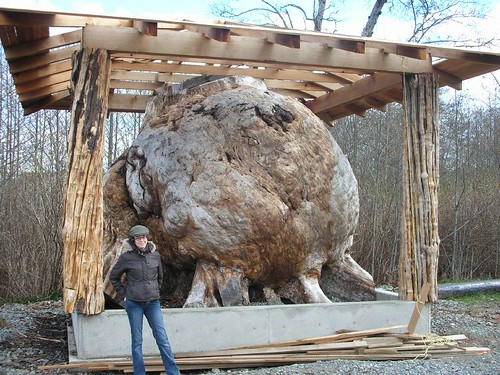Nestled right in the middle of present-day Vancouver, The Cambie Village area no longer forms any municipal boundary. However, as Canada Line construction continues, the area functions more like a boundary zone than its central location might suggest.
The Cambie Village area has defined the edges of surrounding neighbourhoods since long before Canada Line construction began. When the City of Vancouver moved its planning focus towards neighbourhood planning in the 1970's, planners identified functioning neighbourhoods and defined unique "neighbourhood plans" in cooperation with local residents. CityPlan, a Vancouver-wide planning framework, concludes that Vancouver is made up of diverse neighbourhoods: "villages within a city, each with its own identity". Where three municipalities once met at the intersection of 16th avenue and Cambie, no less than four officially-defined Vancouver neighbourhoods now connect. These are Mount Pleasant, Fairview, South Cambie and Riley Park/Little Mountain, each with its own neighbourhood plan. I wonder why the Cambie Village area seemed to be the best border when these neighbourhood boundaries were set, presumably in the 1970's. As a major six-lane auto route, did Cambie Street lack cohesiveness or vitality? Did it serve more dispersed areas of residences and offices than, say, Main St, or Arbutus St? Perhaps the neighbourhood boundaries were simply chosen for historic reasons.
Awareness of the Cambie Village area as a functioning urban unit may be very recent indeed. Definition of its boundaries is the subject of polite disagreement. The City of Vancouver's "Cambie Street Improvements" plan places the Northern boundary at City Hall, defining the Cambie Village's extent from 12th avenue to 25th Avenue. On the other hand, the Cambie Village Business Improvement Association defines the area as extending another ten blocks north to 2nd Avenue. This latter view includes the Canada Line stations at Olympic Village (2nd Avenue), Broadway (9th Avenue) and King Edward (25th Avenue). The latter definition emphasizes what the area stands to gain from the future Canada Line.
I haven't been able to find any use of the name "Cambie Village" before Canada Line construction began and the Cambie Village Business Improvement Association was created in 2006. Nor, as far as I know, was there a planning effort to develop a cohesive built environment along the strip before the recent Cambie Village Streetscape Plan. A great deal of community consciousness has arisen in the Cambie Village over the last two years, born of hardship related to construction.



No comments:
Post a Comment